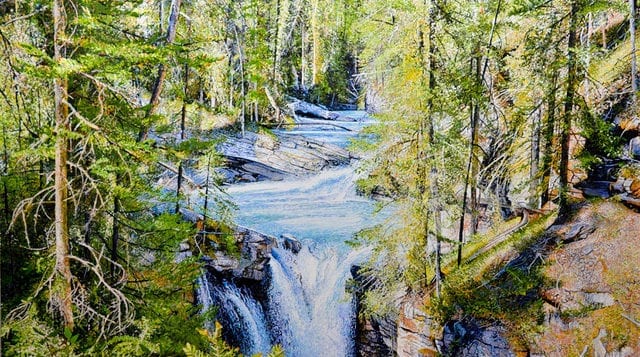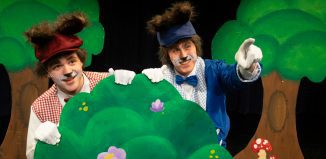Artist of the Month: Ross Barbera
By Irene Ruddock
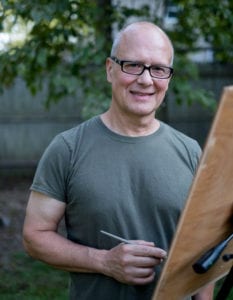 Ross Barbera, a graduate of Pratt Institute, is known for his representational acrylic paintings on canvas, watercolors on paper, original jewelry and digital and abstract art. Presently teaching at St. John’s University in the Art and Design Department in Queens where he was chairman for three years, Ross continues to win many juried awards and prestigious grants to pursue his prolific art career.
Ross Barbera, a graduate of Pratt Institute, is known for his representational acrylic paintings on canvas, watercolors on paper, original jewelry and digital and abstract art. Presently teaching at St. John’s University in the Art and Design Department in Queens where he was chairman for three years, Ross continues to win many juried awards and prestigious grants to pursue his prolific art career.
You were born and raised in Brooklyn, yet all of your paintings, and even much of your jewelry, are depictions of some aspect of the rural landscape. How did that come about?
I spent my summers at my family’s homes in Smithtown and Peakville, New York, and it was during these summers away from the city that I discovered the world of the natural landscape. They were welcome retreats from the city where everything was different: night times were cool, the air smelled clean. I was surrounded by deep forests, ponds and running streams. I was particularly attracted to the interplay of sunlight on flowing water. Nature became the primary inspiration for my paintings ever since then.
Much of your work is representational, yet you also paint in the abstract. What is your inspiration for your abstract work?
Although representational landscape painting has dominated my artistic direction, I discovered abstract, luminous worlds by observing pond surfaces and ice formations “close-up.” For me, this was the hidden world beyond the visible world that has provided the inspiration for my abstract paintings.
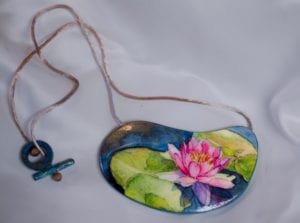
You have an interesting process in watercolor painting that you teach in your classes and workshops. Can you tell us about this?
I have been experimenting with methods that enable me to retain the look of watercolor painting while achieving painted surfaces comparable in strength to acrylic on canvas; this eliminates the need to protect the painting by framing it behind glass. The first step in this process is to bind the watercolor paper to stretched canvas with a thick polymer gel medium. The finished watercolor painting is then protected with multiple layers of acrylic varnish, and for the top layer I apply a few coats of a removable UV protecting varnish.
Some of the background of your paintings have a stained glass effect — clean, clear, translucent and filled with saturated color. How do you achieve that?
I’ve always worked hard to give my paintings a quality of light, in the belief that good landscape painting needs to communicate a feeling of atmosphere; I never complete a painting until I feel it projects a strong quality of sunlight. Regarding my watercolor paintings, I believe the natural transparency of the watercolor medium contributes to a clean, translucent image. I do not apply watercolor paint with sable paint brushes. I predampen the color shape to be painted with a paint brush and clean water. Next, using needle dispenser bottles that have been filled with premixed watercolor to the consistency that I require for painting, I apply multiple colors into the predampened area, and I permit the colors to freely intermix and blend without working into them with a brush. This method of paint application results in clean, clear and beautifully translucent color shapes, and I believe the effect is further enhanced by the application of the final, protective layers of varnish.
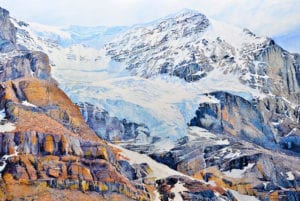
How does your digital work influence your art?
My wife Bonnie bought me my first tablet where I downloaded a drawing app. I was instantly addicted! I eventually downloaded a painting app and loved the convenience of digital plein air painting. Next, I began to export my digital paintings to my computer so I could continue to develop them in Photoshop. I restrict myself to basic brushes that come close to what I use in my acrylic on canvas paintings, and I do not use any effects or filters. I intend my digital paintings to be characterized by the same painterly quality that you would see in my paintings on canvas.
How did you become interested in creating jewelry? Can you describe how you incorporate your watercolors into your jewelry?
I started making jewelry when I was a graduate student at Pratt Institute. My early jewelry was created mostly in sterling, and I often incorporated enamels to add color. I am now using a wide range of different types of paper and wood and eventually discovered the limitless possibilities of building pendants, earrings, bracelets and hair pieces with layers of watercolor paper. I like building up layers on 140-pound Arches watercolor paper, and painting directly onto the surface with watercolor and acrylic paints. I coat the jewelry with multiple layers of acrylic varnish, and the final process involves heating the finished piece in an oven at 150°F, which hardens the varnish process.
What is the focus of your recent work?
I visited the Canadian Rockies with the intent of photographing the mountain glaciers and rivers for a new series of acrylic paintings that would be dedicated to the disappearing glaciers. I plan to continue in my effort to capture the diversity of the North American landscape in painting and will visit national parks throughout the United States and Canada for this purpose.
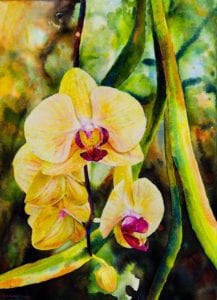
Where can we see your artwork?
I currently have an exhibit featuring my paintings and jewelry at the Comsewogue Public Library in Port Jefferson Station through the month of September. I also currently have a painting on exhibit in the juried show Colors of the Night at the Mills Pond House Gallery in St. James until Sept. 30. My paintings and jewelry can be viewed at any time by visiting www.rossbarbera.com, and my instructional videos can be found on my YouTube channel Realisticart. My jewelry can be purchased directly from my website, www.paperpendants.com.

